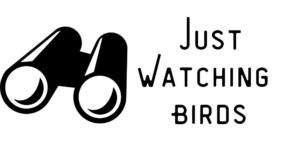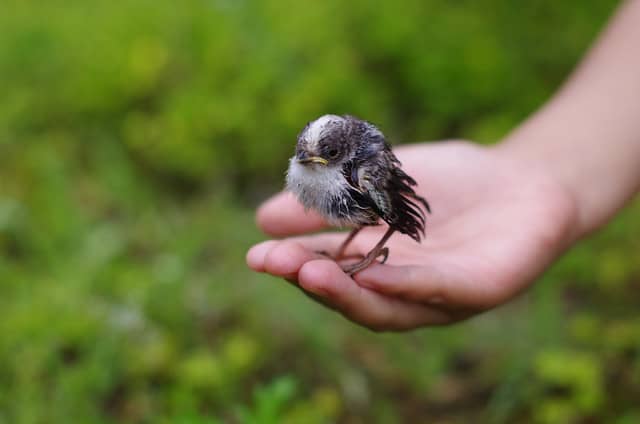As an Amazon Associate, we earn from qualifying purchases with no additional costs for you.
It is fascinating to watch wild birds in nature and to note the interesting behaviors that they display. You may wonder, though, if wild birds would play with toys, as this may not seem to offer a survival advantage.
Wild birds do play with toys. They play with items in their natural environment, like sticks, feathers, leaves, and pebbles, and exhibit behaviors like tossing, catching, or juggling. This playful behavior helps in their cognitive development and provides physical stimulation.
Read on to learn about the types of birds that play with toys and why they may do this. We also discuss what toys you can choose for pet birds.
TIP: If you want to check out the best pair of binoculars for bird watching, we recommend a pair of waterproof and fog-proof 8 x 42 binoculars like the Celestron – Outland X 8×42 Binoculars (Amazon link).
Do Wild Birds Play With Toys?
In some cases, birds have been shown to play or engage in activities for what we might assume is to have fun. For example, a crow was recorded using the lid of a jar to slide down a snow-covered roof more than once.
Playing with objects seems to be common among birds in the parrot and crow families. Corvids, which include crows, jays, ravens, and magpies, are known for their high intelligence.
Parrots are also intelligent birds, which, in the wild, can be seen to interfere with man-made objects. For instance, cockatoos in Australia can be very destructive, chewing up wooden structures. They are also very curious birds; for example, a cockatoo will even investigate a traffic camera.
It could be because of this curiosity that the birds seem to play in the wild. Perhaps they are simply exploring novel items in their environment, which looks like they are playing. In other cases, they may be alleviating boredom.
TIP: Knowing how to spot the birds in your yard is key to enjoying visits from your winged friends as much as possible! The best sources are trusted books, I recommend using the following (Amazon links):
– National Geographic Field Guide to the Birds of North America
– National Audubon Society Birds of North America
Why Would Wild Birds Play With Toys?
Wild birds often play with a variety of natural objects found in their environment. This includes twigs, leaves, feathers, and small pebbles. They may be seen tossing these items in the air, rolling them around, or even engaging in mock fights with them.
Such play is not only enjoyable for the birds but also crucial for their motor skills development and cognitive learning. This behavior is especially common in younger birds, helping them explore and interact with their surroundings, enhancing their survival skills.
Watch this video to see the New Zealand Kea’s intelligence put to the test through play!
Playing behavior is a good way for animals, including birds, to learn about their environment. They are also curious and like to explore different colors, textures, and shapes that are around in their habitat. It also can help birds learn where food is.
Much of what we see as playing may be foraging behavior where a bird may manipulate objects in hopes of finding food. For example, Australian Magpies playing with a flower.
Play may also help strengthen social bonds among animals. This may be the case for birds that learn to interact with others through play; this also helps strengthen their dexterity through the manipulation of objects.
TIP: Wild birds are interesting creatures. Find out what they eat in winter (and if you should feed them!) here and why they fly in flocks in this article! These articles are both very informative for birdwatchers.
Appropriate Toys For Caged Birds
If you have a pet bird, you may want to purchase one or more toys. However, not all birds like toys. The toys may be ignored, or the bird may be frightened of the toy. Also, some toys may be toxic and even have loose parts or wires that can entangle or otherwise harm your bird. You need to be careful who you buy your toys from, and make sure that the toy is safe for your bird.
Some examples of types of birds and appropriate toys are listed below:
Finches
The finches are not that interested in toys but will appreciate a small swing, mirror, and ladder in their cage. The mirror is helpful in making the bird think it is part of a flock. Finches are sociable, and you should always have at least a pair of birds, never one on its own.
Canaries
Canaries also appreciate a mirror swing and ladder. They are unlikely to care for other types of toys.
Cockatiels
A cockatiel enjoys a mirror and ladder. They sometimes like sleeping on a ladder , and a mirror provides company for them as they perceive their reflection as another bird.
Mynahs and starlings
These birds will enjoy foraging for food. One strategy is to place live insects (ordered from a supply company for safety) among leaves on a tray. Other toys are not of much interest to mynahs. They may initially peck at a toy but soon lose interest.
Parrots and cockatoos
These birds will enjoy chewing wooden toys. They may also like pecking at rope toys that have objects attached to them. Be sure that there are no small pieces that these birds could remove and swallow. Avoid toys with small beads and sharp edges.
TIP: Are you looking for high-quality food for wild birds on your backyard? I recommend using Wagner’s products with the highest quality grains used in blending and made in the USA (Amazon links):
– Deluxe Treat Blend Wild Bird Food
– Eastern Regional Wild Bird Food
– Western Regional Wild Bird Food
– Midwest Regional Wild Bird Food
– Southern Regional Wild Bird Food
Do Birds In Rehabilitation Centers Have Toys?
Generally, birds in a rehab center will not be given toys the way that birds as pets are. This is because it is not natural, and the idea behind bird rehabilitation is to prepare the bird for safe release back into the wild.
One object that is sometimes added that is not natural is a mirror. A mirror can help the bird to imprint on its species, which is why this may be used when rearing a baby bird.
Birds in rehab will be placed in enclosures where there are tree branches, twigs, leaves, sand, grass, and a natural-looking water source. The birds will also be encouraged to learn how to forage in this environment so that they will be properly prepared for release.
For some species, the bird may be placed in an enclosure outdoors in the habitat where they will eventually be set free. The idea is that the bird can adjust to the local conditions.
A soft release is often done where the enclosure is eventually opened so that the bird can leave when it wants to, and the bird is support fed for a while.
Conclusion
Only some wild birds have been noticed playing with toys or using human objects as toys. These are usually the intelligent birds like crows and parrots. These species are curious and will explore new items in their environment.
For cage birds, you can buy toys to give them enrichment and help them avoid boredom, but you need to check that the toy is safe and appropriate for the bird concerned.
Toys are not used in wild bird rehabilitation; rather, a natural environment is created to prepare the bird for eventual release into the wild.



